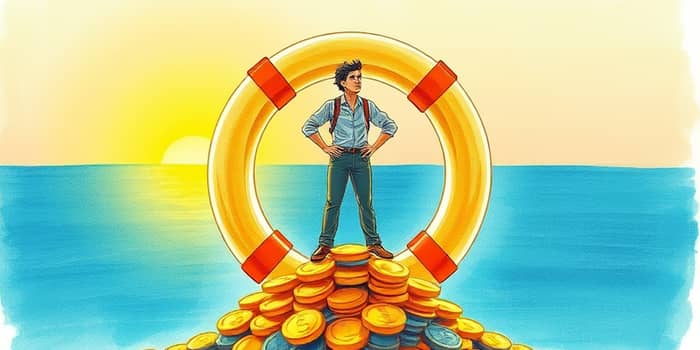
In an unpredictable world, preparing for life’s curveballs can make all the difference. By establishing a robust emergency fund, you create a financial cushion that shields you from unexpected setbacks and offers true peace of mind.
An emergency fund is not just another savings account—it’s a dedicated pool of money set apart exclusively for unforeseen expenses. Whether it’s a sudden car repair, a surprise medical bill, or a temporary job loss, having this safety net means you won’t need to tap into long-term investments or accumulate high-interest debt.
At its core, an emergency fund serves as a critical buffer against financial setbacks. Instead of selling investments at an inopportune time or relying on credit cards, you draw from cash reserves that are readily accessible when you need them most.
Too often, we rush to pursue high-return investments without first securing our foundations. Yet, missing this vital step can lead to costly consequences:
Investing may promise attractive returns, but the value of ready access to funds during a crisis often outweighs temporary market gains. As Charlie Munger advises, adopting a margin of safety is a timeless principle in both investing and personal finance.
Understanding the distinct roles of these two financial tools helps clarify why one must come before the other:
Most experts recommend saving enough to cover three to six months of living expenses. However, this guideline can vary depending on your personal situation:
- If you work in a stable industry with steady income, aim for 3 months.
- For freelancers, self-employed individuals, or single-income households, target 6 months or more.
- As a quick-start, build an initial cushion of $500–$1,000 to address small emergencies immediately.
According to a 2023 LendingTree survey, 64% of Americans live paycheck to paycheck, and 35% have less than $100 left after bills. These statistics underscore the importance of establishing even a modest emergency fund as a first step toward greater financial resilience.
Accessibility and security are paramount when choosing where to park your emergency reserves. Consider these options:
While returns are low compared to stocks or bonds, the trade-off is immediate availability and predictability. Avoid tying up your fund in certificates of deposit with long-term maturities or volatile assets.
Getting started can feel daunting, but by breaking the process into manageable steps, you’ll find consistent progress:
Building an emergency fund requires discipline. Be mindful of these pitfalls:
While the financial discipline of maintaining an emergency fund is invaluable, the true advantages extend beyond numbers. Knowing you have a safety net fosters confidence and empowers you to:
• Take calculated career risks, like switching jobs or pursuing further education.
• Focus on physical and emotional recovery during personal crises.
• Cultivate healthier money habits that translate into long-term wealth building.
Albert Einstein famously called compound interest the “eighth wonder of the world.” By preventing premature withdrawals from investment accounts, your emergency fund helps ensure you continue to benefit from the compounding effect uninterrupted.
Prioritizing your emergency fund lays the groundwork for a secure financial future. Begin with small, consistent contributions, choose an accessible account, and guard this fund for true emergencies only. Over time, the confidence and resilience you gain will prove that, indeed, your emergency fund is your most important investment.
Take the first step today: set up an automatic transfer, adjust your budget, and watch your security grow. Your future self will thank you.
References













